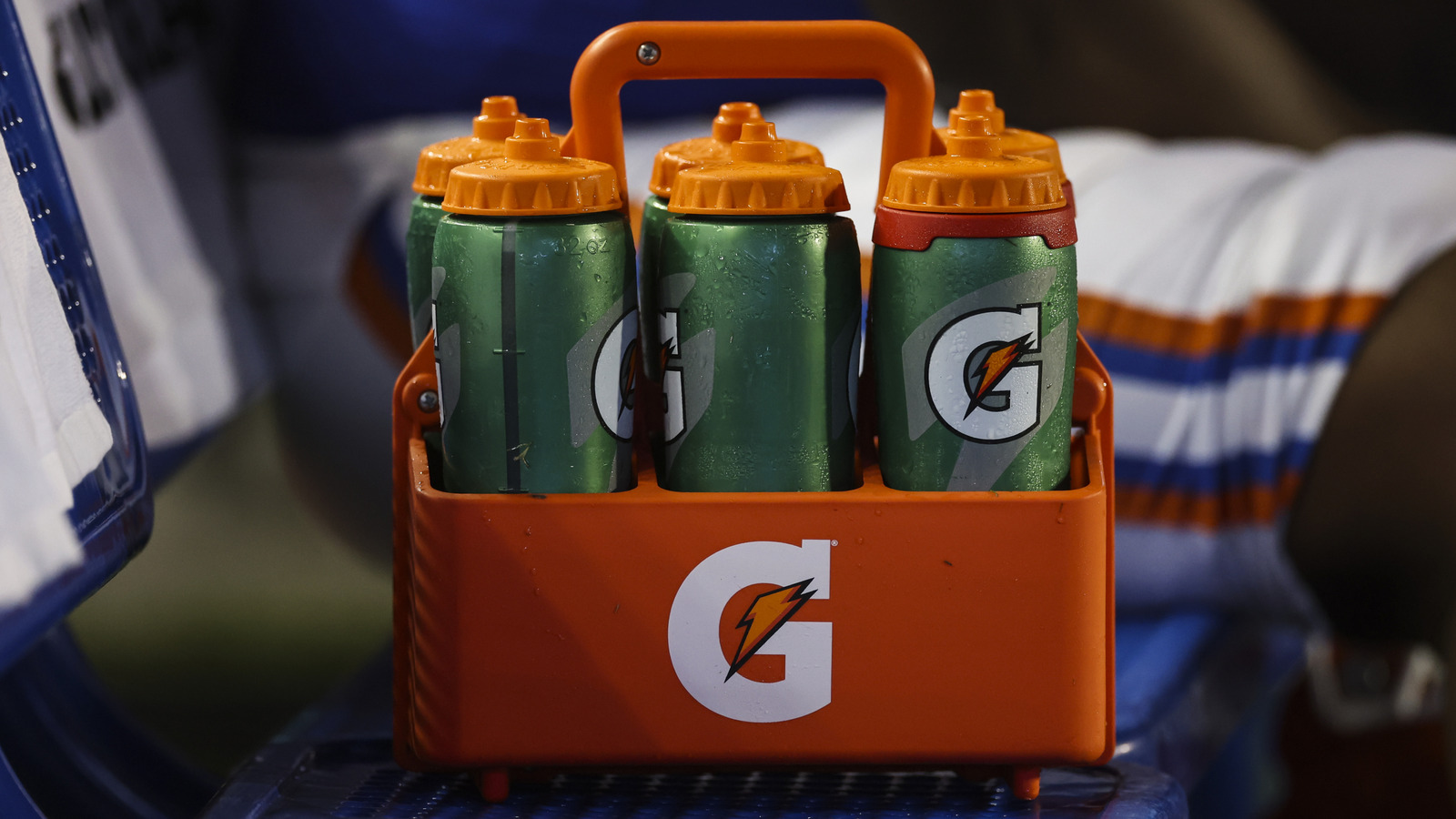
"Ever paused between eager glugs of your sports drink to wonder where, exactly, the name "Gatorade" comes from? Of course not! You're thirsty! There's no time to postulate! We'll wait ... feel better? As we were saying, linguistically, the name "gator-ade" suggests "the drink of the gators," and indeed, that's exactly what it is. Gatorade's conception all started in 1965 at the University of Florida, when then-coach Dwayne Douglas noticed a troubling pattern emerging among his Gator football team."
"The issue was that the college athletes were routinely dropping significant amounts of weight (up to a whopping 18 pounds) during games and practices, but going to the bathroom very little during these periods of intense physical activity. Douglas took his concern to Dr. Robert Cade, kidney disease specialist and director of the University of Florida College of Medicine's renal and electrolyte division. The culprit, explained Cade, was surely dehydration. Athletes need proper nutrition in order to perform well, right? Well, in the 1960s, football players were widely discouraged from drinking water on the field as (went the reasoning) it could cause cramping and take 'em out of the game. Marathon races of the time even lacked water stations for runners."
"Still, Cade thought, the issue had to be more complex than dehydration alone. So the doctor assembled a think tank team with Dana Shires, Jim Free, and A.M. deQuesada - who deduced that the heat-and-dehydration combo was causing athletes to rapidly shed sodium and potassium, thereby depleting their bodies' natural energy reserves. Enter: Gatorade."
Gatorade originated at the University of Florida in 1965 after coach Dwayne Douglas observed football players losing large amounts of weight and urinating infrequently during practice and games. Dr. Robert Cade, a kidney disease specialist, investigated and attributed the problem to dehydration amid prevailing 1960s advice discouraging on-field water consumption. Cade assembled a team including Dana Shires, Jim Free, and A.M. deQuesada. The team deduced that heat and dehydration caused rapid loss of sodium and potassium, draining athletes' energy reserves. In September 1965 Cade's team began testing samples from ten freshman players at different activity stages.
Read at Tasting Table
Unable to calculate read time
Collection
[
|
...
]